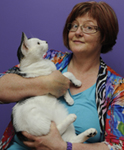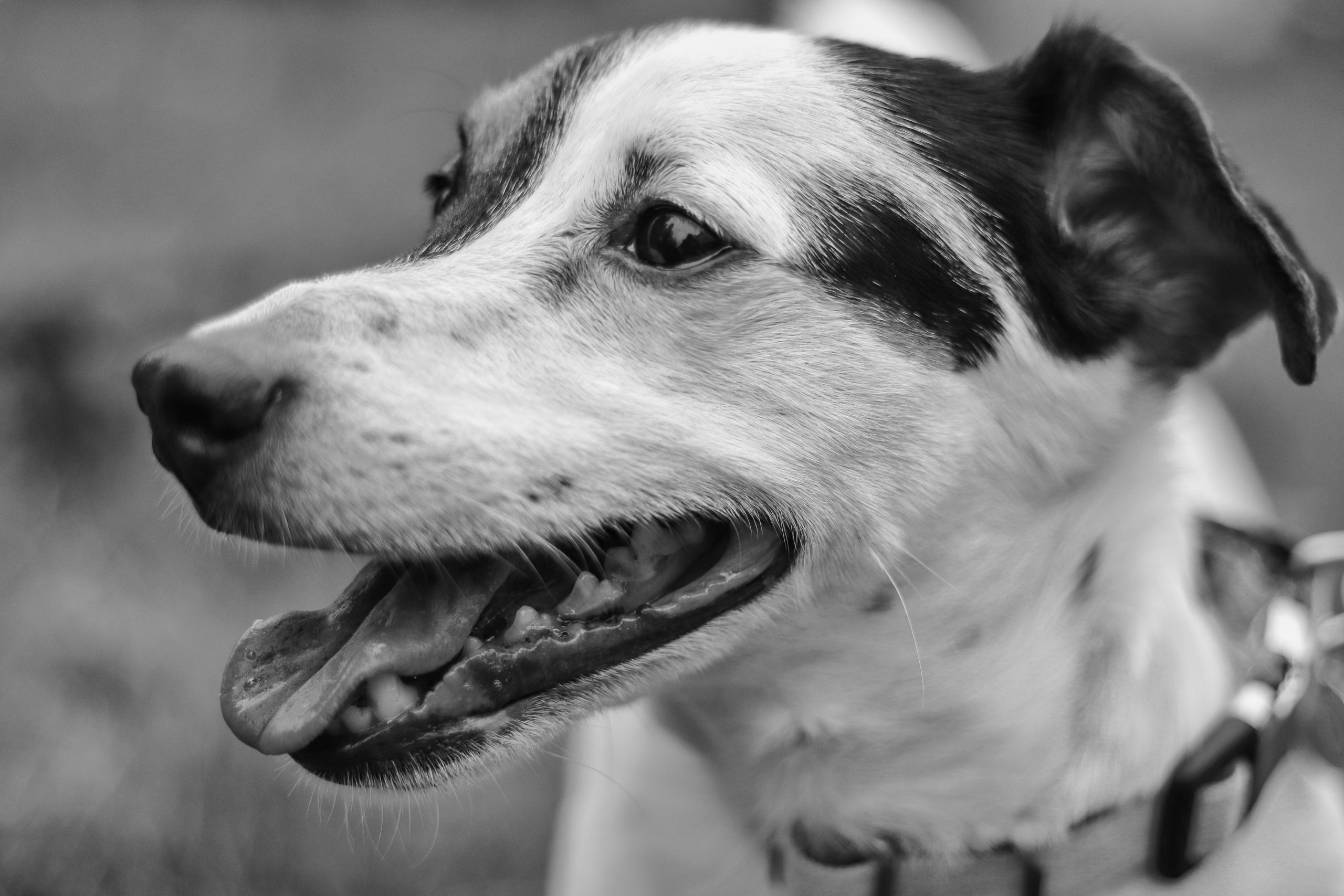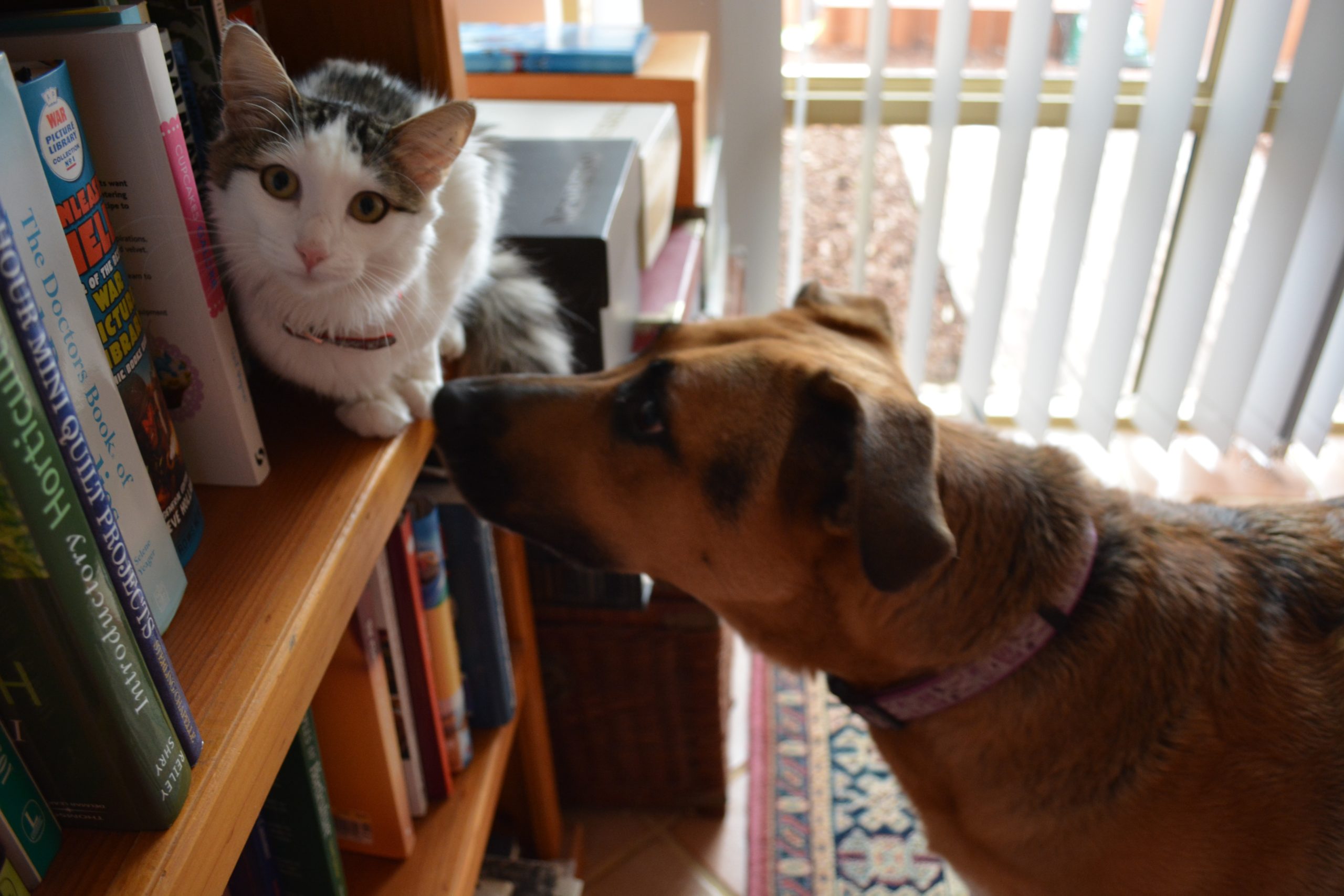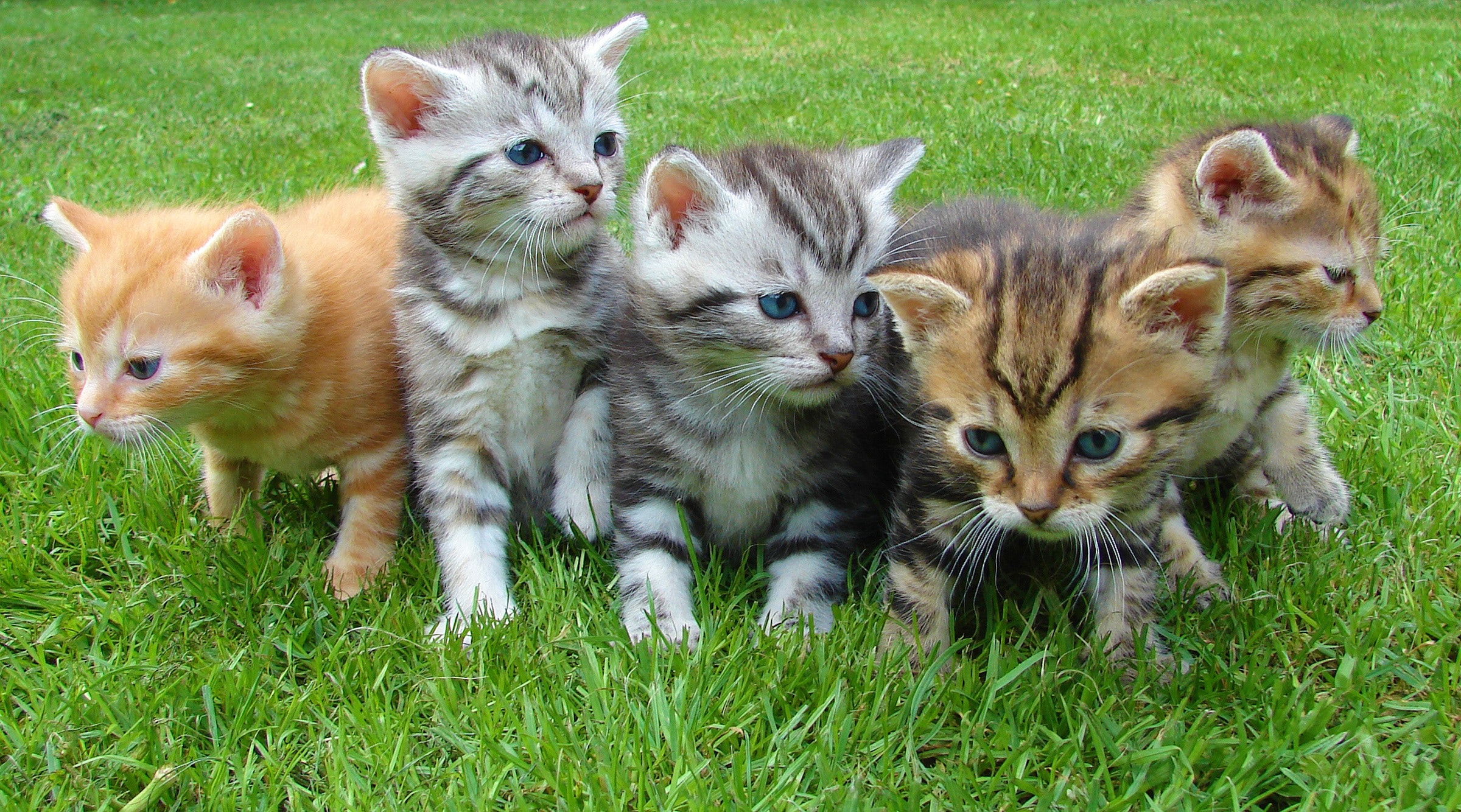A behaviour change is the first thing that gives you a clue that all is not well with your feline friend.
Limping, not eating, fussier, quieter or becoming clingier or more distant. All these are behavioural signs that something is wrong, and your cat uses them to indicate what or where the problem is.
Sometimes there is an obvious swelling or painful area. Or there is a change in urine, faeces or vomiting. Usually however, cats most often indicate a problem by unusual behaviour.
Understanding the historical cause of pet cat anxiety
Let’s first look at the effect domestication has had on cats. We have changed cats’ environments substantially over the last 5,000 years and they have adapted by changing a great deal of their instinctive behaviour.
Wild cats avoid humans, totally, and the true wild cats (Felis sylvestris sylvestris) cannot be tamed just by raising them in a human household.
Our moggies have self-selected over the generations to tolerate, and now even seek out, human company. However, when something goes wrong for a cat, its ‘default emotion’ is fear. And if you fear something that might happen (i.e. a future event), that is the definition of anxiety.
Cats are smart enough to need anti-depressants (I prefer to call it anti-anxiety medication) so it is not surprising to find that in this relatively feline-unfriendly world in which cats find themselves (no mice, no desert sand, too many cats and way too much noise) that many get stressed and anxious.
And so, their behaviour changes. If you have detected a major behavior change come and see me in Roseville or your regular vet as left untreated it can cause significant medical issues.
Anxiety and peeing problems
One of the most noticeable changes is when a cat ‘internalises’ its fears and ends up with cystitis. I call it the feline migraine.
Felines are a very conservative species – they conserve water well (make very strong urine), and conserve energy. That is why they sleep so much – they are not just being bone idle! And why it is so hard to get them to lose weight!
They also use their elimination products for a second purpose – communication. You may have experienced the fact that they use urine (and sometimes faeces) for messaging. You could even call it pee-mail!
So if we understand what the cat is trying to tell us and pity the cat rather than punish it when it pees indiscriminately, we can help resolve their problem and pain quickly and with less mess for the owner.
Try to remember – peeing SOLVES a cat’s problem: there is no moral issue or comment. Peeing IS the cat’s coping mechanism.
How a cat’s anxiety is your problem too
To solve the owner’s problem, however, we are going to have to understand the problem from the cat’s point of view and make some changes to the environment.
Cats use pheromones and fatty acids in their urine to give other cats information, mainly about their time of arrival or departure, and sexual status.
Cat urine actually DOES SMELL WORSE the longer it is outside of the cat. The amino acids breakdown to make the urine smellier (and the fatty acids make it very sticky) at a constant rate. This then acts as a time marker and the message is usually ‘I was here at 4pm today and I don’t want to meet another cat here tomorrow’.
This is very effective where there are few cats in a large area like a desert. However, in the crowded urban environment, it may prevent another cat from peeing at their appointed time and location.
Cats are creatures of habit, and to disrupt that routine is very stressful – so a cat’s bladder may go into spasm, sometimes badly enough to rupture small blood vessels and bleed into the urine making it red. For the cat, this is a bit like the ‘stress head-aches’ we humans suffer when we get fraught and overwrought.
The stress can also prevent the bladder from filling, so the cat is going to urinate more frequently and in different places, desperately looking for somewhere that it finds comfortable to relieve itself. After all, to a cat’s mind, urine cannot itself hurt, so it must be the place they are peeing that is causing the hurt. Hence they look for another place to pee. This is often the start of the difficult syndrome of a cat ‘peeing everywhere around the house’.
Other cat anxiety coping mechanisms
Other coping mechanisms for cats include hiding, running from aggressors (especially cats), chasing other animals (humans, dogs and other cats again), yowling for attention and hissing to prevent unwanted attention. Remember, these are coping mechanisms. It means the cat is making a comment because it is uncomfortable in its environment.
The underlying triggers for any of these behaviours are as varied as the personalities of the cats and the environments their owners put them in. But they are nearly all based in anxiety.
If your cat is showing stress by using any of these coping mechanisms, the two things to remember are:
- it is unlikely that the cat will solve the problem on its own so it will get worse, and
- the earlier the intervention the more likely the treatment will resolve the problem.
Once the coping activity is a habit, it will take much longer and need much more medication and behavioural intervention to resolve it. Act fast and restore your kitty to emotional equilibrium – talk to your vet now.
I also write more on the relationship between cat anxiety and bladder issues in the article: How A Cat Bladder Infection Can Be Caused By Unresolved Anxiety.
About the Author

Dr. Kim Kendall, BVSc MANZCVS (Cat Medicine and Animal Behaviour) is one of the best known feline vets and behaviourists in Australia and the world.
Since 1994 her dedicated cat-only veterinary, boarding and grooming centre, The Chatswood Cat Palace has been based on Sydney’s North Shore.
Dr. Kim has a passion for improving feline health, and wants the best emotional and physical wellbeing for all cats at home. She achieves this by incorporating real science to back up clinical judgement.
She is also a pioneering expert in the field of Feline Friendly Care at home and at the vet clinic and has written extensively on the subject.





